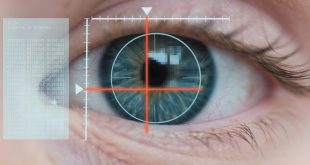By Compton Chiropractic Care
 In fact, there are many forms of headaches including classic migraine, non-classic migraine, tensions headaches, cervicogenic headaches and cluster headaches. The key to any headache treatment is a thorough examination to properly identify the headache responsible for a patient’s symptoms. Many headaches are misclassified. Each headache can have a unique treatment, so it is imperative to have a proper diagnosis.
In fact, there are many forms of headaches including classic migraine, non-classic migraine, tensions headaches, cervicogenic headaches and cluster headaches. The key to any headache treatment is a thorough examination to properly identify the headache responsible for a patient’s symptoms. Many headaches are misclassified. Each headache can have a unique treatment, so it is imperative to have a proper diagnosis.
Classic Migraine: A migraine is a headache that can cause severe throbbing pain or a pulsing sensation, usually on one side of the head. It’s often accompanied by nausea, vomiting, and extreme sensitivity to light and sound. Migraine attacks can last for hours to days, and the pain can be so severe that it interferes with your daily activities. For some people, a warning symptom known as an aura occurs before or with the headache. An aura can include visual disturbances, such as flashes of light or blind spots, or other disturbances, such as tingling on one side of the face or in an arm or leg and difficulty speaking.
Non-Classic Migraine: Some people develop migraines that don’t cause pain. These are often called “silent migraines.” Even though they don’t cause physical pain, silent migraines may trigger other symptoms that can be debilitating. Silent migraines occur when you have aura symptoms without a headache. They typically last from a few minutes up to an hour. Some people have chronic migraines that last for days, weeks, or months, but this isn’t typical for silent migraines.
Tension Headaches: A tension-type headache (TTH) is generally a mild to moderate pain that’s often described as feeling like a tight band around the head. A tension-type headache is the most common type of headache, yet its causes aren’t well understood. Managing a tension-type headache is often a balance between practicing healthy habits, finding effective nondrug treatments, and using medications appropriately. Tension headaches are usually brought on by stress or depression.
Cervicogenic Headaches: Cervicogenic headache is referred pain (pain perceived as occurring in a part of the body other than its true source) perceived in the head from a source in the neck. It is a secondary headache, which means that it is caused by another illness or physical issue. In the case of cervicogenic headache, the cause is a disorder of the cervical spine and its component bone, disc and/or soft tissue elements. Numerous pain-sensitive structures exist in the cervical (upper neck) and occipital (back of head) regions. The junction of the skull and cervical vertebrae have regions that are pain generating, including the lining of the cervical spine, the joints, ligaments, cervical nerve roots and vertebral arteries passing through the cervical vertebral bodies.
People with cervicogenic headaches often have a reduced range of motion of their neck and worsening of their headache with certain movements of their neck or pressure applied to certain spots on their neck. The headaches are often side-locked (on one side only), and the pain may radiate from the neck/back of the head up to the front of the head or behind the eye. The headache may or may not be associated with neck pain.
Cluster Headaches: Cluster headaches, which occur in cyclical patterns or cluster periods, are one of the most painful types of headaches.
A cluster headache commonly awakens you in the middle of the night with intense pain in or around one eye on one side of your head. Bouts of frequent attacks, known as cluster periods, can last from weeks to months, usually followed by remission periods when the headaches stop. During remission, no headaches occur for months and sometimes even years. Fortunately, cluster headache is rare and not life-threatening.
Chiropractors are licensed Doctors who work extensively in the Neuro-musculoskeletal system. That means the focus on conditions related to nerve disorders, muscle or ligament disorders and skeletal disorders. Therefore, evaluation and treatment of acute or chronic headaches is a very common reason for patients to seek chiropractic care.
Research shows that spinal manipulation – one of the primary treatments provided by Doctor of Chiropractic – may be an effective treatment option for tension headaches and headaches that originate in the neck. A 2014 report in the Journal of Manipulative and Physiological Therapeutics (JMPT) found that interventions commonly used in chiropractic care improved outcomes for the treatment of acute and chronic neck pain and increased benefit was shown in several instances where a multimodal approach to neck pain had been used. Also, a 2011 JMPT study found that chiropractic care, including spinal manipulation, can improve migraine and cervicogenic headaches.
If you have pain, or other immobility issues, call Compton Chiropractic Care Today and discover how so many others, just like you are finding long term relief without drugs and without surgery!
COMPTON CHIROPRACTIC
Call Today:
352-391-9467
 Central Florida Health and Wellness Magazine Health and Wellness Articles of the Villages
Central Florida Health and Wellness Magazine Health and Wellness Articles of the Villages



